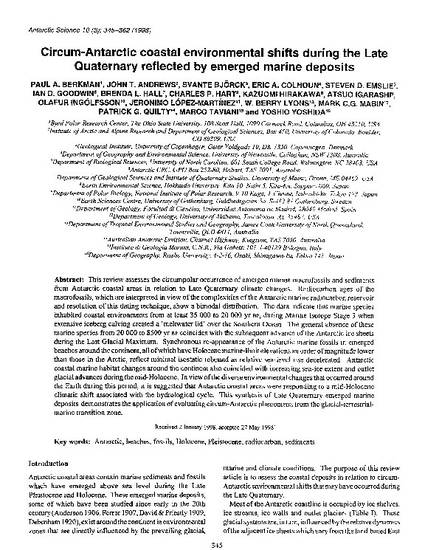
This review assesses the circumpolar occurrence of emerged marine macrofossils and sediments from Antarctic coastal areas in relation to Late Quaternary climate changes. Radiocarbon ages of the macrofossils, which are interpreted in view of the complexities of the Antarctic marine radiocarbon reservoir and resolution of this dating technique, show a bimodal distribution. The data indicate that marine species inhabited coastal environments from at least 35000 to 20000 yr sp, during Marine Isotope Stage 3 when extensive iceberg calving created a 'meltwater lid' over the Southern Ocean. The general absence of these marine species from 20000 to 8500 yr sp coincides with the subsequent advance of the Antarctic ice sheets during the Last Glacial Maximum. Synchronous re-appearance of the Antarctic marine fossils in emerged beaches around the continent, all of wh ich have Holocene marine-limit elevations an order of magnitude lower than those in the Arctic, reflect minimal isostatic rebound as relative sea-level rise decelerated. Antarctic coastal marine habitat changes around the continent also coincided with increasing sea-ice extent and outlet glacial advances during the mid-Holocene. in view of the diverse environmental changes that occurred around the Earth during this period, it is suggested that Antarctic coastal areas were responding to a mid-Holocene climatic shift associated with the hydrological cycle. This synthesis of Late Quaternary emerged marine deposits demonstrates the application of evaluating circum-Antarctic phenomena from the glacial-terrestrial-marine transition zone.
Available at: http://works.bepress.com/brenda_hall/3/
